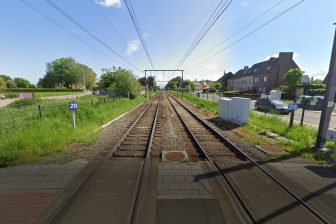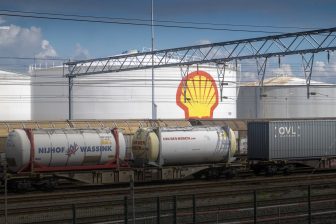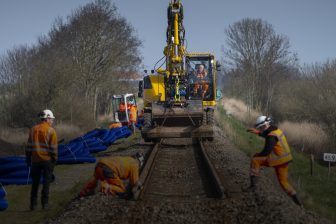Rail Technology Conferences 2012: A bold and successful 4th edition
With more than 80 rail professionals from 10 different countries, Rail Technology Conferences 2012, held on 24 & 25 April in Amstelveen, the Netherlands, has been a very successful 4th edition. Experts from Europe’s leading rail nations shared their experiences, insights and best practices on issues concerning Life Cycle Management on 24 April and High Frequency Operations conference on 25 April. Prof Andrew McNaughton, Technical Director of Britain’s High Speed Two, judged the decision to combine operations with asset management in one event as ‘bold’ and found the papers presented to be of unusually high quality. Roel van den Bosch, CEO Bosch Spoor and chairman of the Life Cycle Management conference concludes: “The presentations showcased a good combination and mix of theoretical and practical approaches and presented a very useful update on the state-of-the-art since the last conference on this topic.”
On the first day of the event the study on benchmarking the efficiency of all European infrastructure managers and national railway undertakers, recently executed by the European Railway Agency (ERA), was presented. Following ERA’s presentation, the latest developments in Austria were introduced. Researchers from Graz University of Technology shared their insight about the sense and non-sense of LifeCycleCosting models. This included considerations about investment for track renewal versus postponed investments, as well as maintenance and even speed restriction. Summing up their findings, van den Bosch concluded that decisions should be based on accurate information about the most important cost drivers and the actual condition of the assets. Further, the latest developments on monitoring systems, technical innovations and simulation techniques on both infrastructure and rolling stock were presented.
Concerning the main themes of day one, van den Bosch finally concluded that monitoring of the value chain has changed its meaning over the last decade. It has moved from technical issues to the processes in themselves, or in his words: “From doing the right things, to doing things right.” Creating value for the customer has thereby moved to a central position. These developments are also expressed in a new kind of contract. The first experiences in the rail industry with examples from the Netherlands and Sweden, presented by Strukton’s COO, have shed light on the opportunities as well as the difficulties. The initiative set up by the World Class Maintenance group for military and aviation assets gave the audience a glimpse into a different industry that can offer learning opportunities for the rail sector.
The morning session of 25 April centred on the ability to model or evaluate the effects of infrastructural measures, whether slow orders, traffic increases, station adaptations or even maintenance strategies, on the robustness of traffic flows. Erland Tegelberg, Chief Engineer at Strukton and one of the chairmen of the conference on High Frequency Operations concludes: “though not yet perfect, modelling can certainly help get a better grip on those parameters that have the most influence on costs, punctuality or disruptions.”
After an intermezzo in which the results to date of the EU sponsored RIVAS vibration reduction project were presented, McNaughton sketched the challenges for the distant future of High Speed Two operations in Britain. Further, Network Rail offered an insight into imminent operations for the Olympic Games. Next, Swiss Federal Railways (SBB) shared recent innovations in planning for standardised maintenance slots both small and large. Thereby showing there is still opportunity for win-win capacity management. Finally, the limitations and opportunities of ERTMS in cost and capacity were discussed.
The 4th edition of Rail Technology Conferences proved that the need and desire of experts from all over Europe for face-to-face communication is unabated. It also showed that, although much has been done to explore the opportunities as well as the difficulties of Life Cycle Management and High Frequency Operations related issues, there is still a large area that needs further exploration. An update on these topics in the near future will be expected to present new results.
U las zojuist één van de gratis premium artikelen
Onbeperkt lezen? Profiteer nu van de introductieaanbieding voor € 10,- per maand.
Bent u al abonnee?



